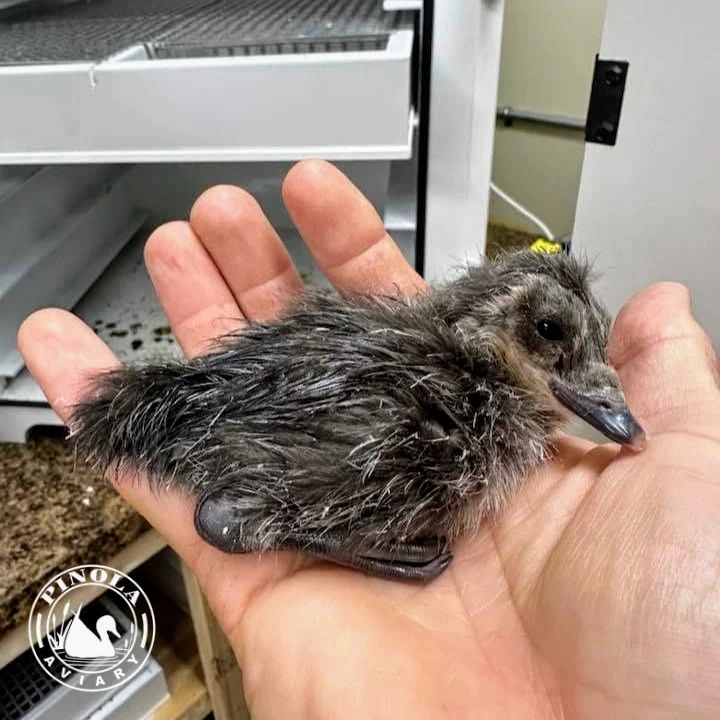- Successful breeding of the first spectacled eider ducklings at Pinola during the 2024 nesting season.
- Innovations in artificial nesting structures and habitat simulation for northern latitude species in warmer climates.
- Challenges and lessons learned in aviculture contributing to the conservation of endangered species.
- The implications of climate-adaptive behaviors and the importance of sustained research and monitoring in wildlife conservation.
- Future perspectives for enhancing biodiversity through controlled breeding programs and the necessity of ecosystem preservation measures.
The spectacled eider is a species that traditionally nests in the tundra regions of Alaska, Canada, and Siberia. The 2024 nesting season marked a groundbreaking triumph as Pinola witnessed the successful breeding and hatching of spectacled eider ducklings for the first time in history. This achievement underscores the persistent effort and ingenuity of conservationists and aviculturists who have strived to replicate suitable nesting environments for these birds outside their natural habitat.
This milestone was reached by developing an innovative nesting concept tailored specifically for spectacled eiders. Every detail was planned precisely—from the 10-inch diameter PVC pipe, designed as the nest base, to the 6-inch height that kept it above ground level. These nests were partially buried and surrounded by driftwood, mimicking a natural setting, while the inclusion of sphagnum moss provided a familiar touch from the tundra landscape.
This project involved many years of arduous work and patient observation. It was not without its setbacks and challenges, serving as a testament to the complexity of aviculture and species conservation. Despite the joy of seeing the first Pinola-hatched spectacled eider duckling, professionals in this field are reminded that each step forward comes with new learning opportunities.
Breeding northern species like the spectacled eider in considerably warmer climates, such as Louisiana, presents a monumental challenge. These birds are innately adapted to cooler temperatures, and efforts to provide an accommodating environment require meticulous attention to mimic their natural habitats. Such success depends on understanding and replicating the microclimate and vegetation these species are accustomed to.
Through aviculture, conservationists gain valuable insights into endangered species’ breeding behaviors and requirements. However, the work does not stop at achieving a successful hatch. The true measure of success lies in the survival and well-being of the ducklings and the sustainability of breeding practices.
Moving forward, the focus shifts to improving these birds’ resilience to varying climatic conditions and ensuring that they retain their natural behaviors despite being raised in managed habitats. This involves continuous monitoring, health checks, and adaptive management to address potential complications.
The implications of this development extend beyond the Pinola Sanctuary. Climate change poses a significant threat to wildlife, and understanding how species can adapt to new environments is crucial. While conservationists strive to tackle the causes of climate change, they must also work on strategies to protect species that may lose their natural habitats due to climatic shifts.
The future holds great potential for enhancing biodiversity through controlled breeding programs. However, it also reminds us of the delicate balance required between human intervention and nature’s intrinsic systems. As these spectacled eider ducklings grow, they embody the hope for a future where the concerted efforts of conservationists result in a thriving population, both in controlled settings and, ultimately, in the wild.
Ensuring the longevity of such conservation milestones necessitates public awareness, funding, and policies supporting ecosystem preservation. Encouraging other breeding facilities to adopt similar techniques may result in broader conservation successes.
The narrative of Pinola’s spectacled eider ducklings is one of triumph amid adversity, calling for continued dedication to wildlife conservation. It is a story that will undoubtedly inspire and propel future endeavors to preserve our planet’s precious biodiversity.
*****
Source Description
We are elated to say that the 2024 nesting season has brought not only the first ever spectacled eider nests at Pinola, but as of today, our first ever Pinola hatched Spectacled Eider duckling! For a tundra nesting species to successfully nest in Louisiana is incredible, and we are extremely proud of this. All females chose the same style of nest as the one pictured, a 10 inch diameter PVC pipe cut to 6 inches in height, buried about 3 inches into the ground. We surrounded the pipes with stacked driftwood and lined the nest with sphagnum moss.
This has taken many years of trial and error, humbling experiences, and learning from mistakes to reach this milestone. However, despite this achievement, we still have a long way to go regarding getting other northern latitude species to nest successfully, not to mention having consistent success with this species moving forward. Even with these nests, the outcomes have not all been positive and were full of teachable moments for the future. Such is aviculture!

